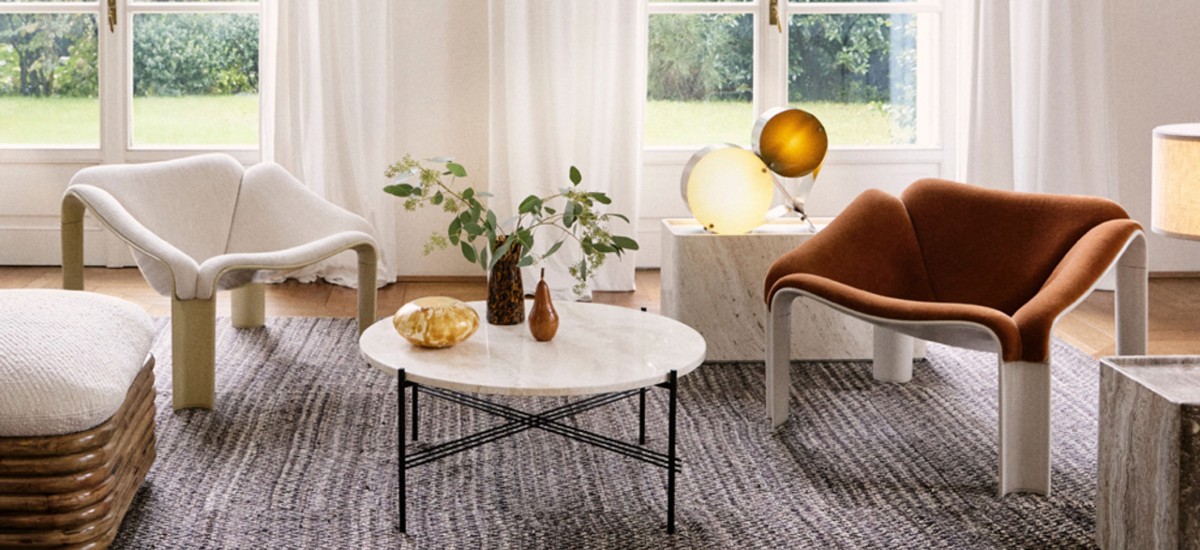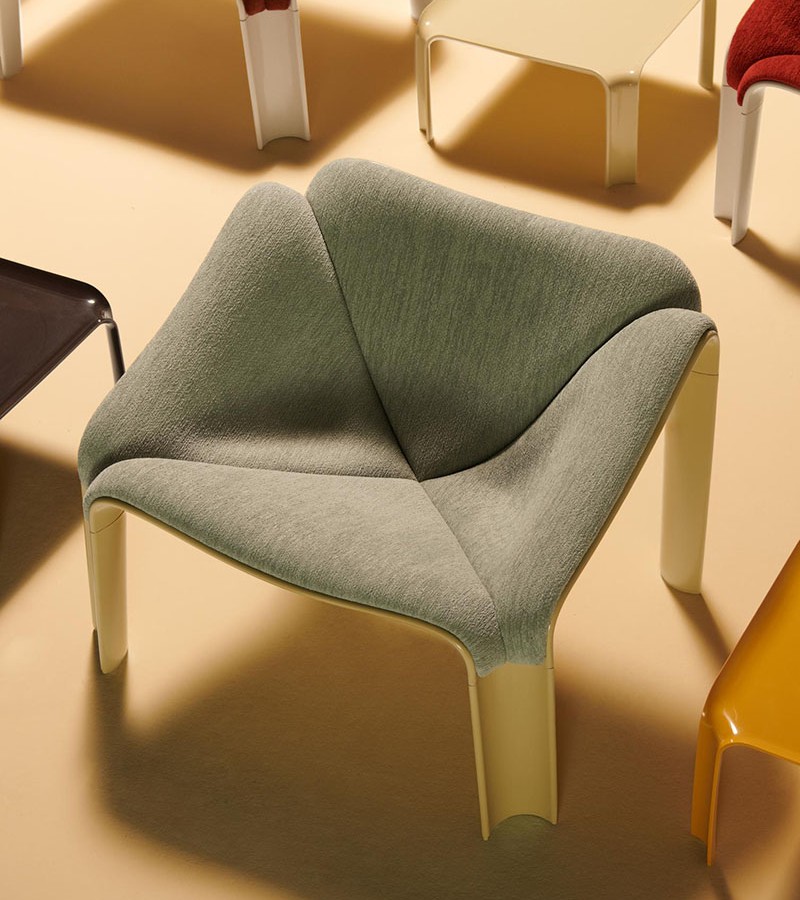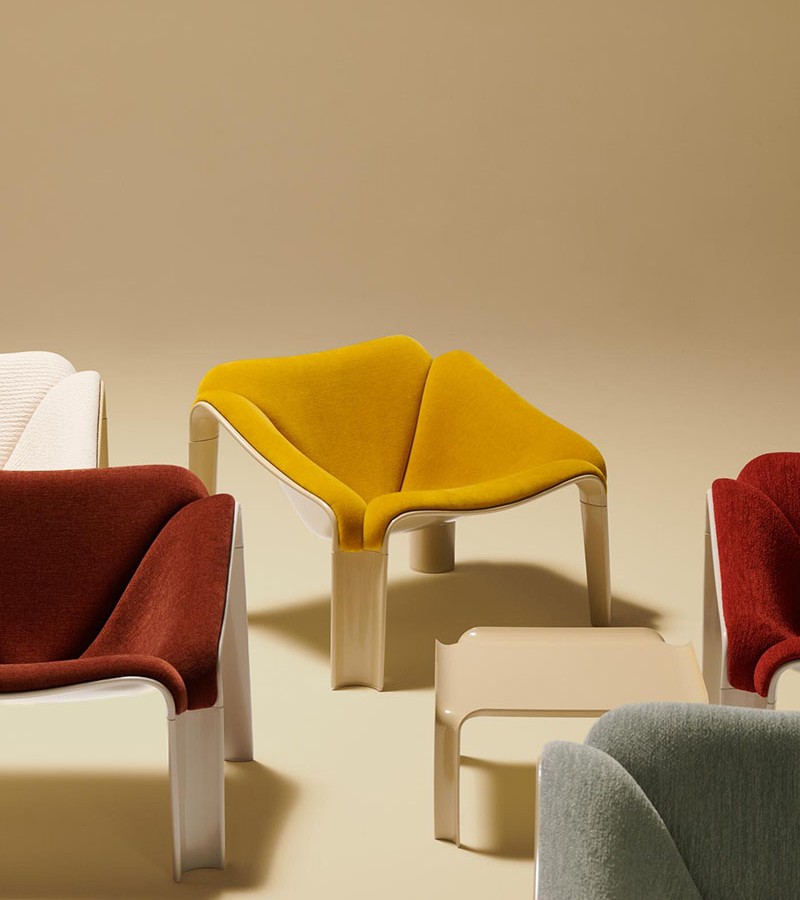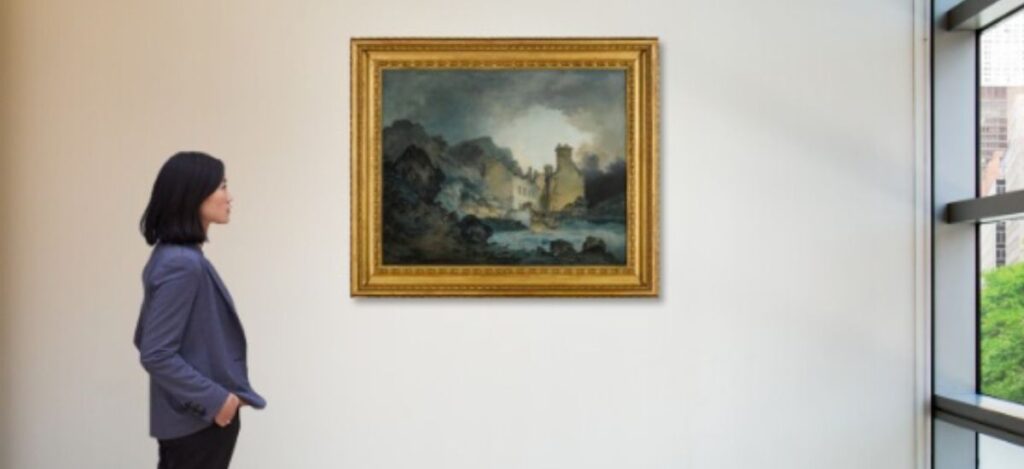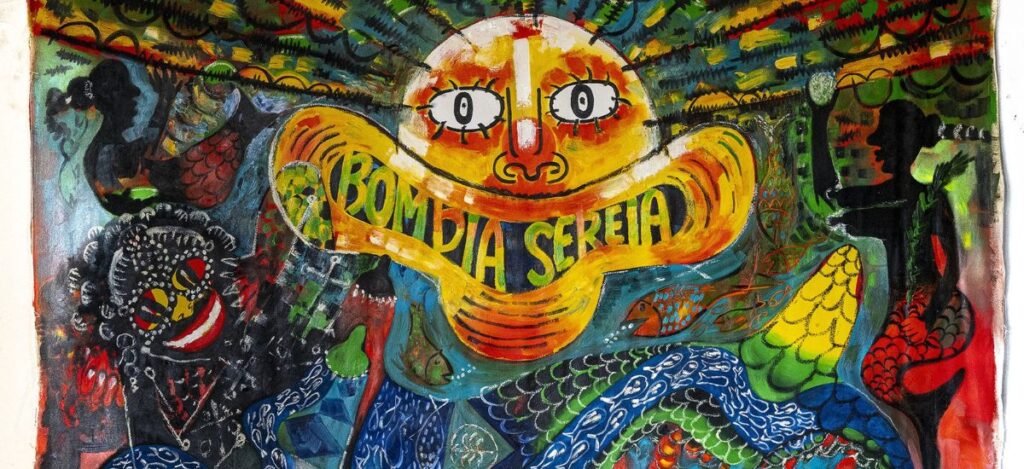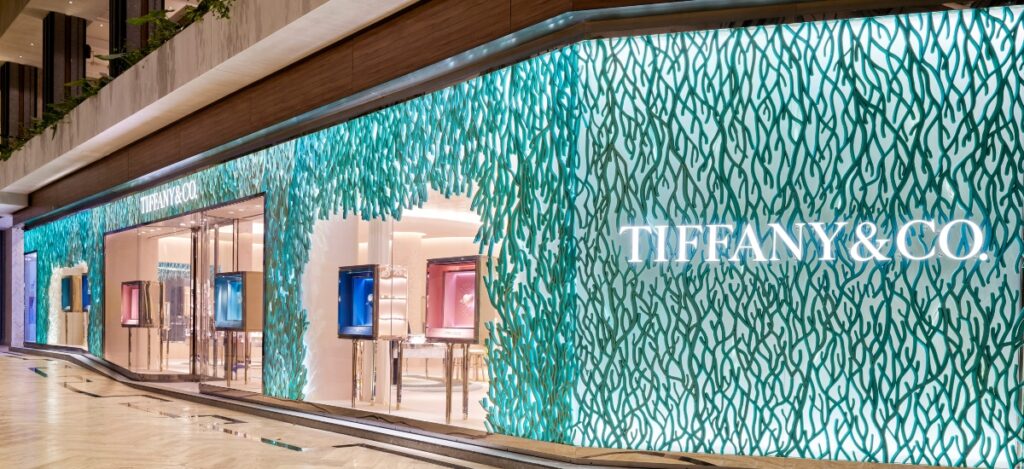Originally introduced in the late 1960s, Pierre Paulin’s F300 chair—long considered a cult favorite among collectors—has been largely out of reach except through vintage dealers. Now, this striking silhouette is officially returning to the market through a modern re-edition by GUBI.
Working in close collaboration with Benjamin Paulin, the son of the celebrated French designer, GUBI has faithfully revived the chair’s original essence while adapting it for today’s lifestyle. Though the F300 retains the dramatic curves and low-slung form that made it radical in 1967, it has undergone subtle changes to align with contemporary needs and environmental standards.

